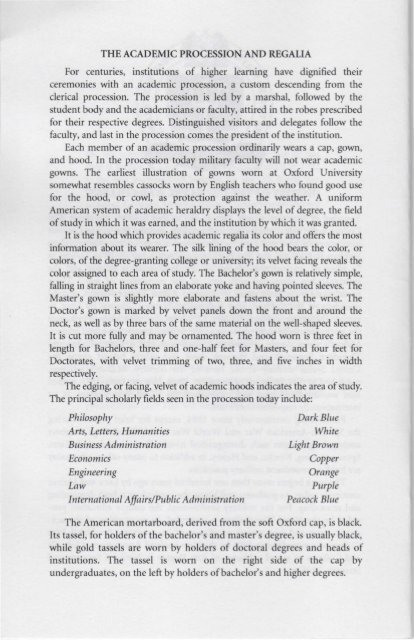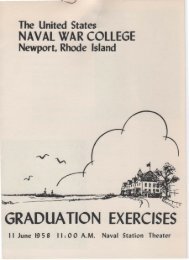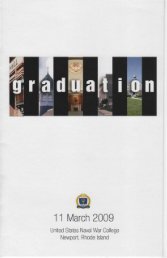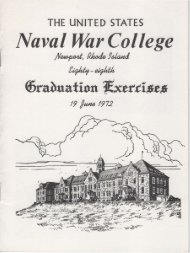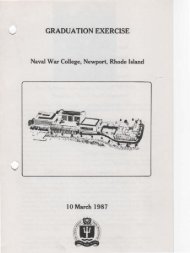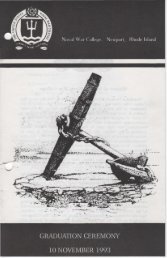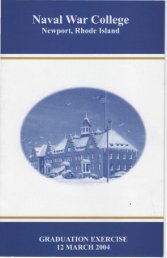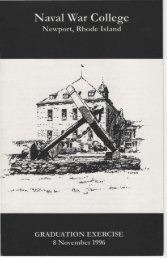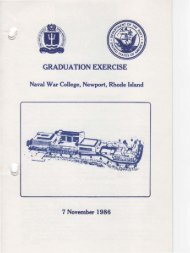November 16, 2010 - US Naval War College
November 16, 2010 - US Naval War College
November 16, 2010 - US Naval War College
You also want an ePaper? Increase the reach of your titles
YUMPU automatically turns print PDFs into web optimized ePapers that Google loves.
THE ACADEMIC PROCESSION AND REGALIA<br />
For centuries, institutions of higher learning have dignified their<br />
ceremonies with an academic procession, a custom descending from the<br />
clerical procession. The procession is led by a marshal, followed by the<br />
student body and the academicians or faculty, attired in the robes prescribed<br />
for their respective degrees. Distinguished visitors and delegates follow the<br />
faculty, and last in the procession comes the president of the institution.<br />
Each member of an academic procession ordinarily wears a cap, gown,<br />
and hood. In the procession today military faculty will not wear academic<br />
gowns. The earliest illustration of gowns worn at Oxford University<br />
somewhat resembles cassocks worn by English teachers who found good u e<br />
for the hood, or cowl, as protection against the weather. A uniform<br />
American system of academic heraldry displays the level of degree, the field<br />
of study in which it was earned, and the institution by which it was granted.<br />
It is the hood which provides academic regalia its color and offers the most<br />
inforn1ation about its wearer. The silk lining of the hood bears the color, or<br />
colors, of the degree-granting college or university; its velvet facing reveals the<br />
color assigned to each area of study. The Bachelor's gown is relatively simple,<br />
falling in straight lines from an elaborate yoke and having pointed sleeves. The<br />
Master's gown is slightly more elaborate and fastens about the wrist The<br />
Doctor's gown is marked by velvet panels down the front and around the<br />
neck, as well as by three bars of the same material on the well-shaped sleeves.<br />
It is cut more fully and may be ornamented. The hood worn is three feet in<br />
length for Bachelors, three and one-half feet for Masters, and four feet for<br />
Doctorates, with velvet trimming of two, three, and five inches in width<br />
respectively.<br />
The edging, or facing, velvet of academic hoods indicates tl1e area of study.<br />
The principal scholarly fields seen in the procession today include:<br />
Philosophy<br />
Arts, Letters, Humanities<br />
Business Administration<br />
Economics<br />
Engineering<br />
Law<br />
International Affairs/Public Administration<br />
Dark Blue<br />
White<br />
Light Brown<br />
Copper<br />
Orange<br />
Purple<br />
Pen cock Blue<br />
The American mortarboard, derived from the soft Oxford cap, is black.<br />
Its tassel, for holders of the bachelor's and master's degree, is usually black,<br />
while gold tassels are worn by holders of doctoral degrees and heads of<br />
institutions. The tassel is worn on the right side of the cap by<br />
undergraduates, on the left by holders of bachelor's and higher degrees.


